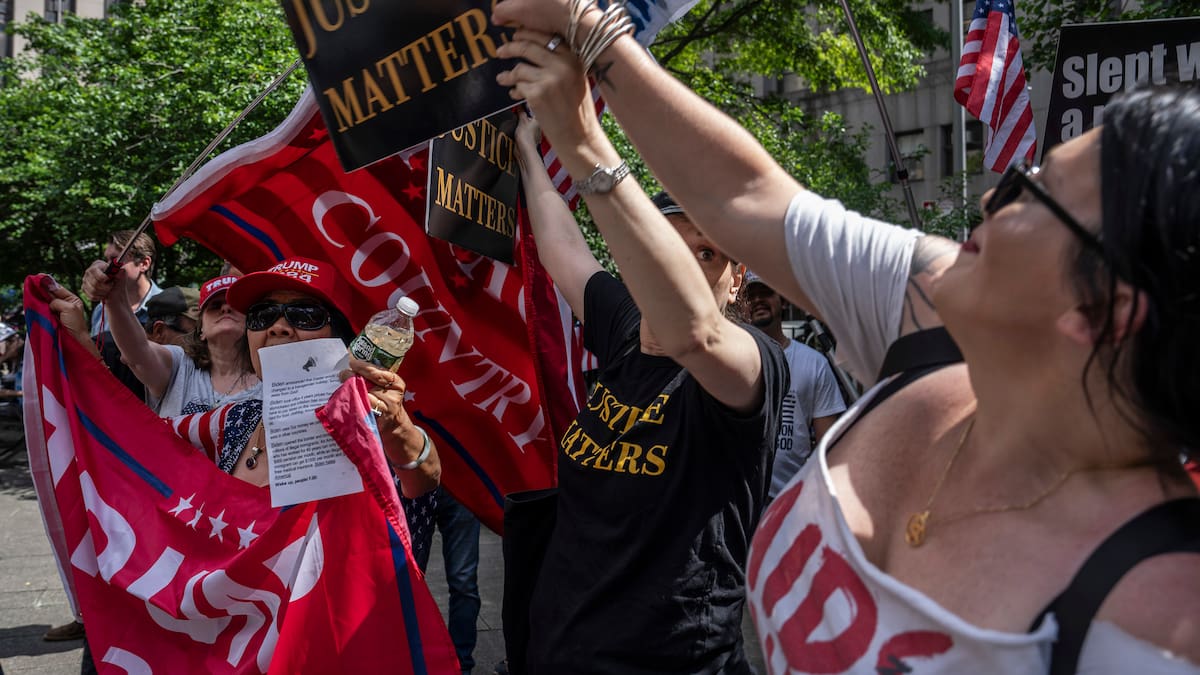Matt Gaetz is pegged to run the Justice Department (a man recently under congressional investigation for sex crimes) and Elon Musk – of Tesla and Twitter/X fame – is geared to lead a Department of Government Efficiency.
The irony isn’t lost on me that Trump’s support could be attributed to the largely unregulated social media landscape and rise of misinformation and disinformation online.
Misinformation refers to misleading information that’s distributed without malicious intent, whereas disinformation describes false content that’s designed to confuse or manipulate audiences. A 2018 Unesco report described disinformation as acts of fraud that should be treated “for what they are – as a particular category of phoney information”.
The Washington Post counted 30,573 “false or misleading claims” during Trump’s presidency. Does Trump’s unwavering support mean people can’t distinguish fact from fiction? Could it be that people either don’t care, or worse, wholeheartedly support these untruths?
Say it enough times, it must be fact, right?
Studies have found correcting information isn’t straightforward.
A 2019 meta-analysis of 32 studies concluded that while correcting misinformation reduces the likelihood of people seeing it as fact, the brain stores both the falsehood as well as its correction. The problem is made worse if the falsehood is embedded into people’s belief systems, values, or identity.
Speaking to me last year in the context of confirmation bias, Jess Berenston-Shaw said people operate within a set of narratives or cognitive biases that exist within a system of social values and constructs.
Facts that are outside of this framework go by the wayside. Essentially, the brain unconsciously picks and chooses what information to hold on to.
For example, imagine people are sitting in their cars in traffic and they think “we just need more roads”. New roads are built due to induced demand, but you find there aren’t reductions in travel times, Berenston-Shaw said.
“Confirmation bias will tell people that they’re actually travelling quicker because any information is interpreted through an existing story that building roads eases congestion.”
There’s also the “illusory truth effect”, where the more something is repeated or seems familiar, the more it rings true. While there are no parameters to ensure people in responsible positions act with decorum, it gets trickier when we try to draw a line in the sand when it comes to harm prevention.
Enter the hate speech void
“The test for harmful content is not that it is untrue or of doubtful validity but that it is causative of serious emotional distress. It is doubtful that disinformation in and of itself would do that, although in these ‘gentle times’, who knows?” former District Court judge David Harvey wrote in response to a column on the free speech versus hate speech conundrum.
Democracy by its very nature is a noisy and chaotic system, he said, highlighting that the internet can be thanked for the true democratisation of information, the ability for every citizen to become a publisher.
“Would we have it any other way, or would we like to see our every keystroke constrained by some information [tsar]? There are more than sufficient restraints on freedom of expression. We do not need any more.”
While we know hateful speech drives harmful behaviour, it’s difficult – particularly in the New Zealand context – to prove the link between the act and harm.
Last week, Oceans and Fisheries Minister Shane Jones weighed in on Trump’s win via Facebook.
“Why did Trump win? Well, when you prioritise pronouns rather than the frustrations of the people against woke elite culture, you deserve to lose … ” Is this an opinion about “woke culture” or is it exacerbating discrimination towards the trans community?
Police data between January 2022 and January 2024 revealed 9351 hate incidents. The majority were motivated by discrimination on the grounds of race, followed by sexual orientation, then gender identity.
Hoban v Attorney-General
In any event, as we’ve seen in a recent case before the Court of Appeal, the list of protected groups is limited.
The case dates to 2018, when a sermon containing violent and anti-gay hate speech was published in an Auckland newspaper. Russell Hoban, who faced years of discrimination because of his sexual orientation, took issue with the inaction by authorities and filed proceedings.
Section 61 of the Human Rights Act prohibits racially charged speech that’s “likely to excite hostility against or bring into contempt any group to persons”. The issue is whether this extends to groups on the grounds of sexual orientation.
Hoban sought a declaration that the section was inconsistent with the right to freedom from discrimination in the Bill of Rights Act by failing to protect sexual orientation. Last year, the High Court held the section had a discriminatory effect, but it was demonstrably justified. The court sympathised with Hoban but noted that the scope of hate speech laws was a matter for Parliament.
If only Parliament would come to the party. Earlier this year, Justice Minister Paul Goldsmith withdrew a Law Commission referral to assess the scope of hate speech laws.
Then in August, Attorney-General Judith Collins announced the Government wouldn’t be progressing the eight remaining recommendations of the Royal Commission into the terrorist attack on Christchurch mosques in 2019 either.
In other words, the Government won’t repeal section 131 of the Human Rights Act 1993 and change the Crimes Act to include an offence of inciting racial and religious harmony. It seems that intentions to stir up, maintain or normalise hatred through threatening, abusive, or insulting communications with protected characteristics – including religious affiliation – are all good to go.
With the Court of Appeal decision expected to be released at the end of the year or early next, the best-case scenario would see the court prompting Parliament to reconsider the issue.
Although there appears to be no parliamentary appetite for change, crazier things – like Trump coming out on top – have happened.






